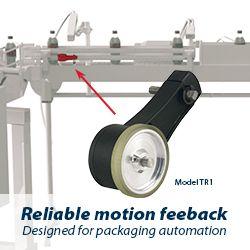Are You a DARPA Amateur Astronomer?
DARPA unveils SpaceView program at Arizona Science and Astronomy Expo to engage amateur astronomers in helping to protect satellites
NASA estimates more than 500,000 pieces of hazardous space debris orbit the earth, threatening satellites that support peacekeeping and combat missions. These objects include spent rocket stages, defunct satellites and fragments from other spacecraft that are the result of erosion, explosion and collision. A collision between one of these small pieces of debris and a satellite could release more than 20,000 times the energy of a head-on automobile collision at 65 mph. To help address the threat, DARPA created SpaceView, a space debris tracking project that provides amateur astronomers with the means to make a difference. Amateur astronomers will have their first opportunity to sign up in person for the program at the Arizona Science and Astronomy Expo in Tucson, November 10-11, 2012.
The vision behind the SpaceView program is to provide more diverse data to the Space Surveillance Network (SSN), a U.S. Air Force program charged with cataloguing and observing space objects to identify potential near-term collisions. SpaceView hopes to achieve that goal by engaging U.S. amateur astronomers by purchasing remote access to an already in-use telescope or by providing a telescope to selected astronomers. When a telescope that is provided by the program is not in use by the SpaceView program, DARPA will provide its use for astronomy and astrophotography.
"There is an untold amount of potential in the amateur astronomy community that we hope to use to broaden our situational awareness in space," said Lt Col Travis Blake, USAF, DARPA program manager. "SpaceView should provide more diverse data from different geographic locations to ensure we have a robust understanding of the current and future state of our space assets."
Interested astronomers may learn more about the program and sign up at www.spaceviewnetwork.com. Participants will be selected based on geographic location and access to a permanent site for a telescope, among other criteria. In the first phase of the program, the program team will evaluate options for commercial off-the-shelf telescopes to determine which capabilities are best suited to the task.
SpaceView is part of a larger DARPA program, OrbitalOutlook, which seeks to improve the accuracy and timeliness of the SSN, a worldwide network of 29 space surveillance sensors (radar and optical telescopes, both military and civilian) that are focused on observing space objects. GEOST, Inc., a research and development firm in Tucson, Arizona, has been contracted to develop the SpaceView network. A similar effort, StellarView, will focus on engaging the academic community and is scheduled to kick-off in 2013.
Featured Product

